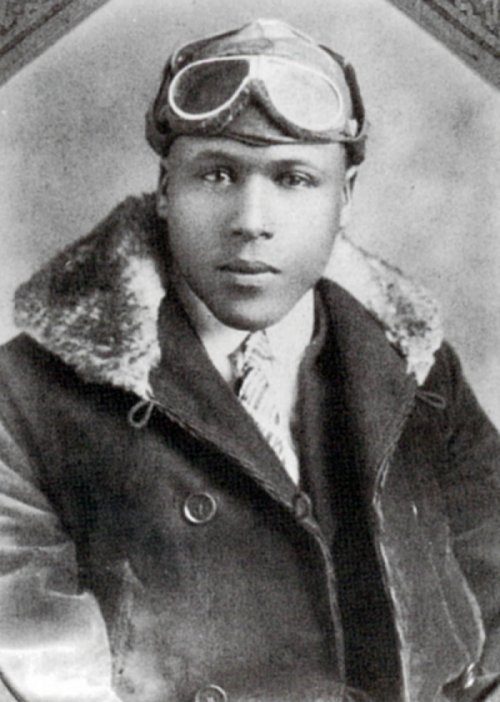James Herman Banning
Today, James Herman Banning. The University of Houston's College of Engineering presents this series about the machines that make our civilization run, and the people whose ingenuity created them.
James Banning was born in 1899. Like his contemporary, Bessie Coleman,he was Black, he'd lived in Oklahoma, and he become a famous pilot. His family moved to Iowa when he was twenty. He studied some electrical engineering at Iowa State, then set up an auto repair shop in Ames. But he was bitten by the flying bug and he struggled to get into a flying school. Since he was Black, schools kept turning him away. Finally, a former Army pilot who ran a school in Des Moines accepted him. Banning became the first Black flyer licensed by the US Department of Commerce.
On the eve of the Great Depression, he moved to LA to serve as chief pilot for the Bessie Coleman Aero Club. That flying school had been founded by visionary Black pilot William Powell. Powell strongly argued that, in the language of those times, the sky would give the Negro a door into freedom. With Banning and their students, he fought the uphill battle to raise funds -- not just for the Club, but for airplane manufacturing and air service as well.
While Banning taught flying, he also barnstormed in a plane he'd named Miss Ames, after Ames, Iowa. In 1932, he set out with a mechanic, Thomas Allen, to be the first Black pilot to fly across America. This time, they flew an Alexander Eaglerock -- a two-seat biplane that'd come out six years before. It was now yesterday's airplane, so Banning and Allen rebuilt its engine, adding new magnetos and cannibalizing valves from a Nash automobile.
They set out without enough money for gas and oil, calling themselves the Flying Hoboes. When they reached Yuma, the airport attendant said, "Aren't you the same pilot who landed here two years ago and blew a tire?" Banning allowed he was. The man remembered how Banning made a perfect three-point landing before he hit badly laid concrete on the runway. "You," The man told him, "are why we now have an up-to-date airport." "Well," said Banning, "that should be worth a tank of gas."
And so it went. After twenty-one days -- 42 hours in the air -- they reached Long Island's Valley Stream Airport. Their 3300 mile trip was an accomplishment that must be weighed against the skein of adversities they'd overcome.
A few months later, Banning was scheduled to fly an exhibition at Camp Kearney, California. Bad weather delayed the show for several days. When it cleared, a Navy pilot offered to fly him over from Lindbergh field to check the gathering crowd. There, the pilot decided to show off for his now famous passenger. He pulled into a steep climb from near ground level in front of the stands. The plane stalled, couldn't recover, and crashed. Both were killed.
Powell raged at his friend's death, "God poured forth his wrath," he wrote. Well, Banning, like Bessie Coleman before him, died in a dangerous business. He'd waged his war with history on two fronts. He lost the one in the air, but only after he'd made huge strides in his other fight -- the one against prejudice on the ground below.
I'm John Lienhard, at the University of Houston, where we're interested in the way inventive minds work.
Much of Banning's story is told by William, J. Powell, Black Aviator, (with an introduction by Von Hardesty) (Washington, D.C.: Smithsonian Institution Press, 1994). Originally published in 1934 under the title Black Wings.
See also these web sources: http://www.earlyaviators.com/ebanning.htm
https://en.wikipedia.org/wiki/James_Banning

James Herman Banning: 1899-1933.
(Image courtesy of the National Air and Space Museum)